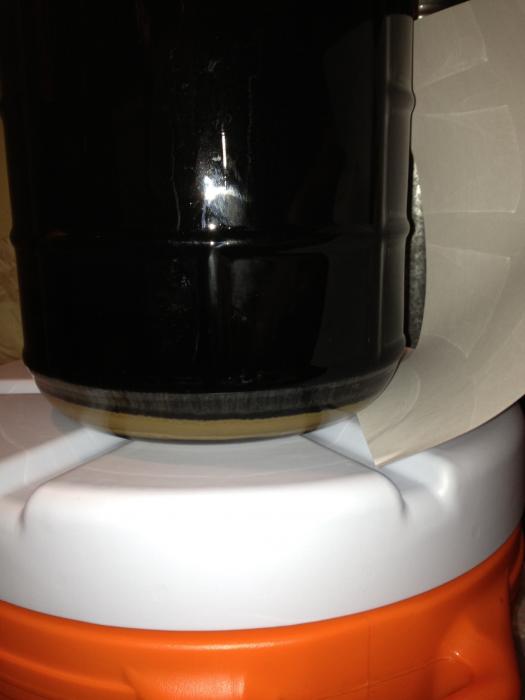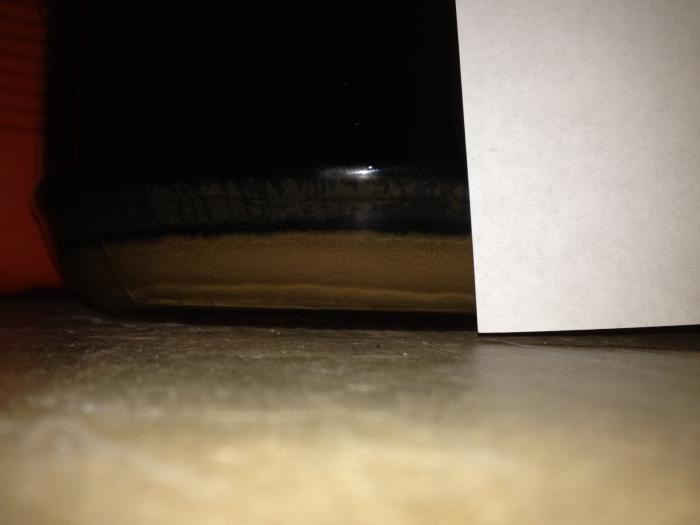Likely a paranoid newbie question here...
I am bulk again a RIS, and the yeast cake at the bottom is getting very dark.
(Picture attached, w/ white sheet of paper for color reference.)
It was white after ~2 weeks, but now ~4 weeks in its turning brown. I was planning to age for 2-3 months before bottling.
1) Is this coloring normal, or is the yeast dead?
2) If dead, do I need to re-rack or bottle, to get the beer off the dead yeast?
3) Also if dead, do I need to add fresh yeast at bottling?
Thanks in advance,
-AtlChief

I am bulk again a RIS, and the yeast cake at the bottom is getting very dark.
(Picture attached, w/ white sheet of paper for color reference.)
It was white after ~2 weeks, but now ~4 weeks in its turning brown. I was planning to age for 2-3 months before bottling.
1) Is this coloring normal, or is the yeast dead?
2) If dead, do I need to re-rack or bottle, to get the beer off the dead yeast?
3) Also if dead, do I need to add fresh yeast at bottling?
Thanks in advance,
-AtlChief




